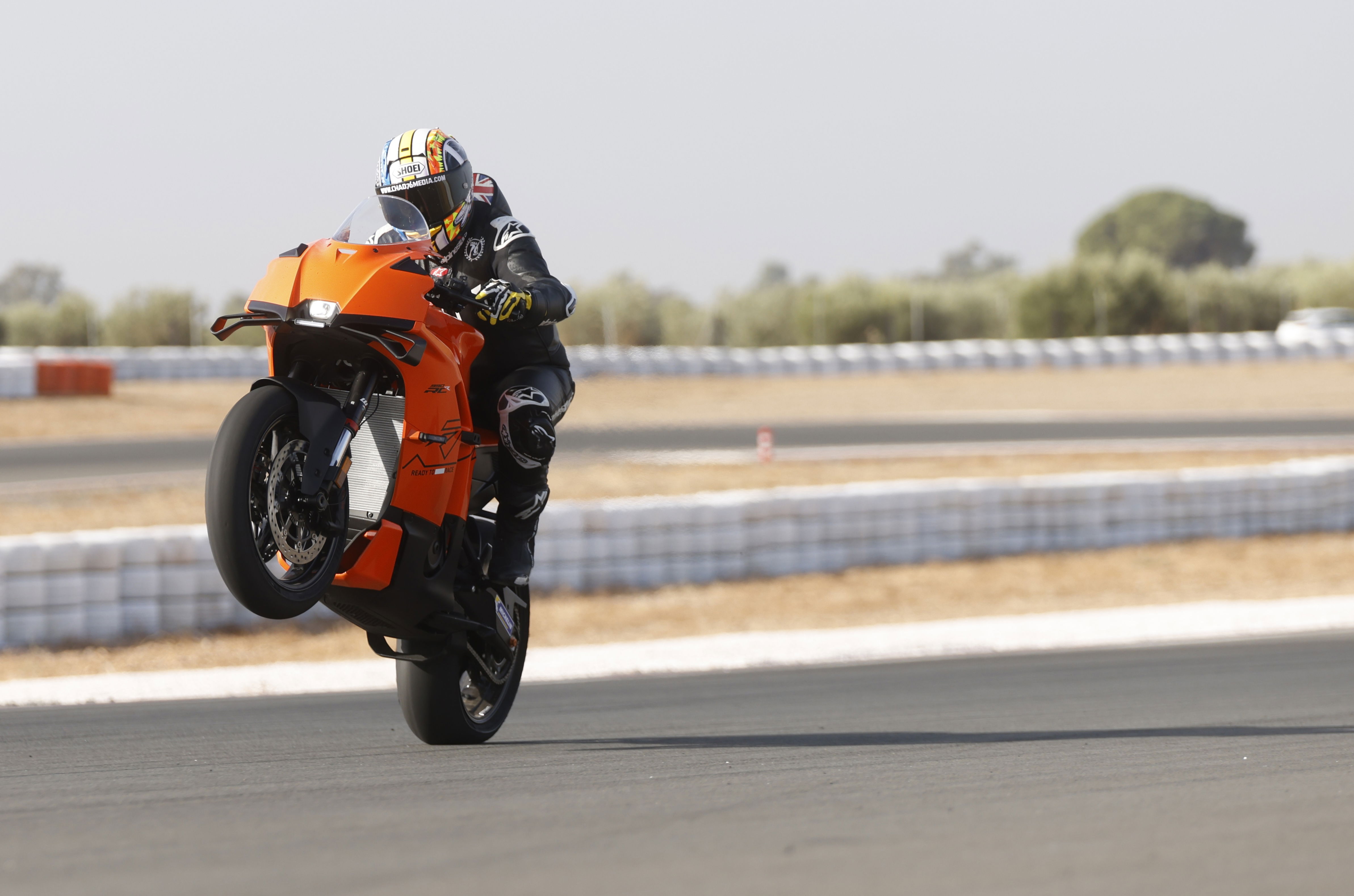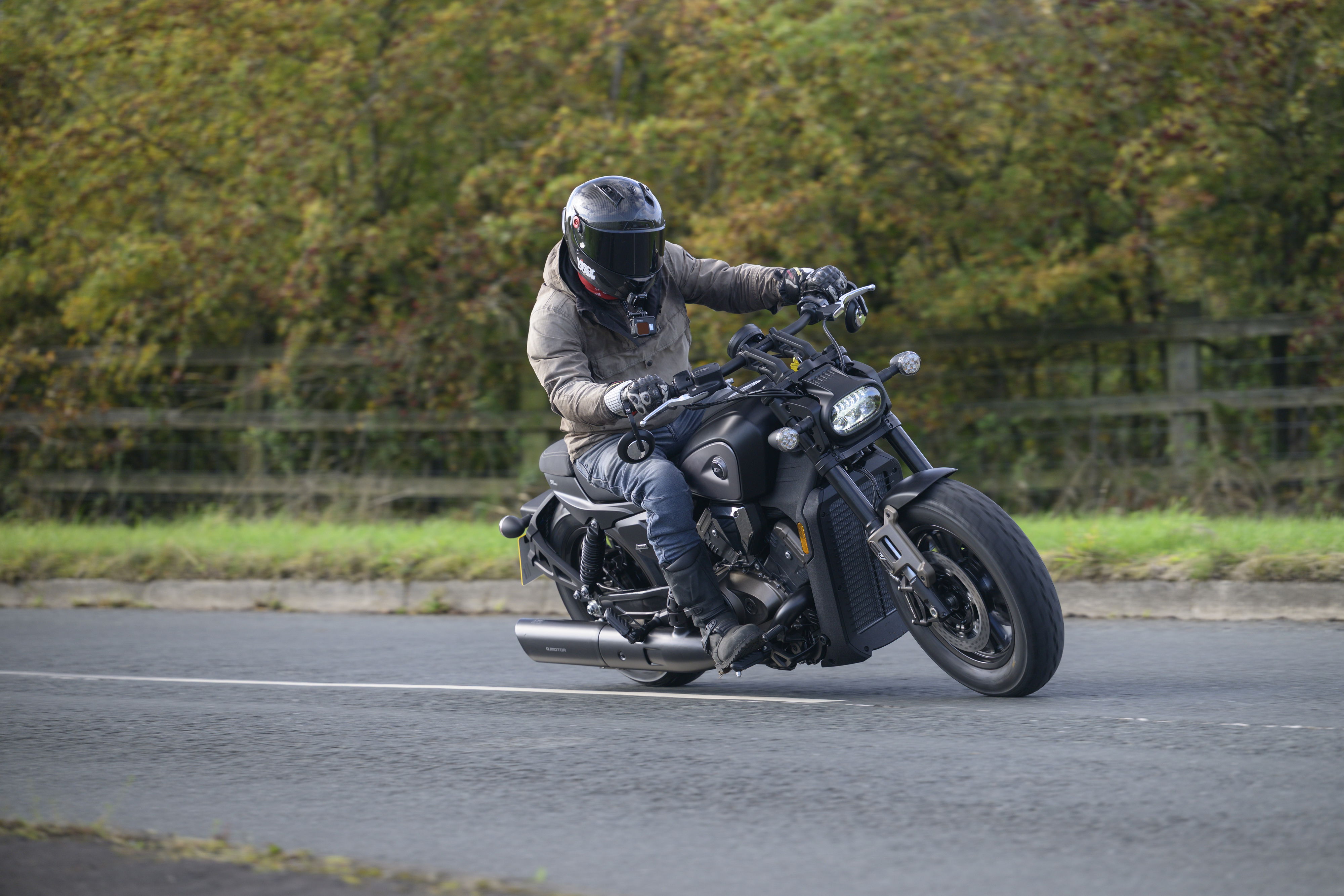BT1100 Bulldog (2002 - present) review
Delivers a mixed message – looks like a streetfighter, is in fact a boulevard cruiser. Soft core motorcycle for those that want heavy metal with manners

The Bulldog isn’t what it appears to be – a Ducati Monster/Buell X1/Cagiva Raptor/Triumph Speed Triple kind of two-wheeled urban street warrior. The Bulldog’s funky wrapping paper may give that impression, but the present underneath the groovy angles is actually cruiser based – although Yamaha are branding it a roadster.
There’s a lot of metal going on in this motorcycle and that’s a deliberate ploy to create a solid, hefty honest lump of bike. And all that iron and allymongery (eh?) hangs around 1,063cc of old-school, air-cooled satin black V-twin engine, hoisted out of Yamaha’s full stretch Drag Star, complete with a pair of Keihin carburettors, five-speed gearbox and shaft drive. It has a bigger, better breathing airbox but is no powerhouse – peak power is a claimed 65bhp at 5,500rpm, torque 65ft-lbs at 4,500rpm – gentle figures which, on paper, gives clue to the Bulldog’s real (very easygoing) identity.
The engine itself hangs from a pair of exposed tubular steel frame rails, the curved backbone of the frame giving the Bulldog its hunched, heavy-shouldered stance. The rest of the Bulldog’s chassis is super straightforward. Forks are 43mm telescopic items, adjustable for spring preload only and the single rear shock similarly so. Brakes up front are a pair of R1-derived four-piston calipers, working on 298mm discs, the single rear 267mm disc gets a twin-piston squeeze. The fuel tank holds a hefty 20 litres, and the whole bike tips the scales at a hefty 229.5kg bone dry.
The Bulldog has some tidy details – like the dimpled ally frame bungs, pillion grab handles carved out of solid, brushed aluminium switchgear, fork leg protectors and heavyweight bar ends. Sit on it and you immediately notice the soft, broad seat, the way you’re snugged into the bike – the ramped back of the petrol tank adds to this feeling. The mildly upswept handlebars rear up to meet you thanks to the risers bolting them to the top yoke – the riding position is very relaxed, the footpegs low.
The clocks are elegant, simple and chrome-edged; a large, circular speedo houses a diminutive revcounter in its bottom right hand corner. On ignition, first the speedo needle does a full backflip, then the rev-counter pointer follows suit. The warning lights get their own little shiny surround, the only tacky fly in the quality ointment is a cheapish-looking clock recessed above the ignition barrel.
Nudge it into life and the Bulldog chuffs away pleasantly, with a bit of a lolloping throb to its engine note. The engine has a soft, lazy attitude and a flat power delivery that means it’ll pull top gear cleanly from 2,000rpm, chug purposefully through 3-4-5,000rpm and… that’s about it. Try and drive it hard and the Bulldog’s motor feels strained, flat and lifeless. And it is. But, if you ratchet back any desire to travel urgently, settle into the Bulldog’s friendly personality and drift along, it’s fine. Cruise, dude take in the scenery and the reflections.
The suspension is well damped and sprung, less bouncy than some of Yamaha’s other bikes and the Bulldog happily goes where you point it, safely and with minimum effort from a suitably laid-back pilot. The brakes brake, thankyouverymuch and the lever’s got an adjustable span.
To demonstrate the mixed message the Bulldog gives out (street-tool façade/cruiser heart) several bikes were crashed on the launch – simply because they were ridden in a manner that the Bulldog couldn’t cope with, and wasn’t (or was poorly) designed for. Fault of the bike or rider? Bit of both, I’d reckon.
The front cylinder’s exhaust downpipe sits below and to the right of the crankcases and the Bulldog’s engine is physically big, so the pipe’s low slung. Right-handers, taken with anything more than a lazy punt will put the front shoulder of the pipe in danger of decking – chop the throttle mid-corner or hit a bump and the pipe can dig in and wash the front wheel from underneath you.
I think it’s fair to say that anybody interested in owning a Bulldog will do so because they want a competent, reassuring bike to own, ride and just plain get on with. It has an unassuming, relaxed charm and will doubtless be utterly reliable.
To the vast majority of motorcyclists in the UK however it will be a completely uninteresting, half-cool looking waste of time. In Europe (let’s not forget where it was spawned) it will sell in droves. If you’ve read to here you may understand (and empathise with) where the Bulldog is coming from – most people won’t have got past the first 140 words or so. Fair shout – there are plenty of bikes that are lots better at doing what the Bulldog looks like it should be doing. But if you want a cruiser that isn’t cruiser-shaped, the Bulldog may be what you’re after…
The Bulldog isn’t what it appears to be – a Ducati Monster/Buell X1/Cagiva Raptor/Triumph Speed Triple kind of two-wheeled urban street warrior. The Bulldog’s funky wrapping paper may give that impression, but the present underneath the groovy angles is actually cruiser based – although Yamaha are branding it a roadster.
There’s a lot of metal going on in this motorcycle and that’s a deliberate ploy to create a solid, hefty honest lump of bike. And all that iron and allymongery (eh?) hangs around 1,063cc of old-school, air-cooled satin black V-twin engine, hoisted out of Yamaha’s full stretch Drag Star, complete with a pair of Keihin carburettors, five-speed gearbox and shaft drive. It has a bigger, better breathing airbox but is no powerhouse – peak power is a claimed 65bhp at 5,500rpm, torque 65ft-lbs at 4,500rpm – gentle figures which, on paper, gives clue to the Bulldog’s real (very easygoing) identity.
The engine itself hangs from a pair of exposed tubular steel frame rails, the curved backbone of the frame giving the Bulldog its hunched, heavy-shouldered stance. The rest of the Bulldog’s chassis is super straightforward. Forks are 43mm telescopic items, adjustable for spring preload only and the single rear shock similarly so. Brakes up front are a pair of R1-derived four-piston calipers, working on 298mm discs, the single rear 267mm disc gets a twin-piston squeeze. The fuel tank holds a hefty 20 litres, and the whole bike tips the scales at a hefty 229.5kg bone dry.
The Bulldog has some tidy details – like the dimpled ally frame bungs, pillion grab handles carved out of solid, brushed aluminium switchgear, fork leg protectors and heavyweight bar ends. Sit on it and you immediately notice the soft, broad seat, the way you’re snugged into the bike – the ramped back of the petrol tank adds to this feeling. The mildly upswept handlebars rear up to meet you thanks to the risers bolting them to the top yoke – the riding position is very relaxed, the footpegs low.
The clocks are elegant, simple and chrome-edged; a large, circular speedo houses a diminutive revcounter in its bottom right hand corner. On ignition, first the speedo needle does a full backflip, then the rev-counter pointer follows suit. The warning lights get their own little shiny surround, the only tacky fly in the quality ointment is a cheapish-looking clock recessed above the ignition barrel.
Nudge it into life and the Bulldog chuffs away pleasantly, with a bit of a lolloping throb to its engine note. The engine has a soft, lazy attitude and a flat power delivery that means it’ll pull top gear cleanly from 2,000rpm, chug purposefully through 3-4-5,000rpm and… that’s about it. Try and drive it hard and the Bulldog’s motor feels strained, flat and lifeless. And it is. But, if you ratchet back any desire to travel urgently, settle into the Bulldog’s friendly personality and drift along, it’s fine. Cruise, dude take in the scenery and the reflections.
The suspension is well damped and sprung, less bouncy than some of Yamaha’s other bikes and the Bulldog happily goes where you point it, safely and with minimum effort from a suitably laid-back pilot. The brakes brake, thankyouverymuch and the lever’s got an adjustable span.
To demonstrate the mixed message the Bulldog gives out (street-tool façade/cruiser heart) several bikes were crashed on the launch – simply because they were ridden in a manner that the Bulldog couldn’t cope with, and wasn’t (or was poorly) designed for. Fault of the bike or rider? Bit of both, I’d reckon.
The front cylinder’s exhaust downpipe sits below and to the right of the crankcases and the Bulldog’s engine is physically big, so the pipe’s low slung. Right-handers, taken with anything more than a lazy punt will put the front shoulder of the pipe in danger of decking – chop the throttle mid-corner or hit a bump and the pipe can dig in and wash the front wheel from underneath you.
I think it’s fair to say that anybody interested in owning a Bulldog will do so because they want a competent, reassuring bike to own, ride and just plain get on with. It has an unassuming, relaxed charm and will doubtless be utterly reliable.
To the vast majority of motorcyclists in the UK however it will be a completely uninteresting, half-cool looking waste of time. In Europe (let’s not forget where it was spawned) it will sell in droves. If you’ve read to here you may understand (and empathise with) where the Bulldog is coming from – most people won’t have got past the first 140 words or so. Fair shout – there are plenty of bikes that are lots better at doing what the Bulldog looks like it should be doing. But if you want a cruiser that isn’t cruiser-shaped, the Bulldog may be what you’re after…
| Length (mm) | 2192 |
| Width (mm) | 800 |
| Height (mm) | 1145 |
| Dryweight (kg) | 230 |
| Seats | 2 |
| Seat Height (mm) | 812 |
| Suspension Front | Telescopic fork |
| Suspension Rear | Swing arm (Link suspension) |
| Tyres Front | 120/70 ZR17 |
| Tyres Rear | 170/60 ZR17 |
| Brakes Front | Dual 298mm discs |
| Brakes Rear | Single 267mm disc |
| Wheelbase (mm) | 1511 |
| Ground Clearance (mm) | 168 |
| Cubic Capacity (cc) | 1063 |
| Valves | 4 |
| Max Power (bhp) | 65 |
| Max Power Peak (rpm) | 5500 |
| Torque (ft/lb) | 65 |
| Torque Peak (rpm) | 4500 |
| Bore (mm) | 95 |
| Stroke (mm) | 75 |
| Valve Gear | SOHC |
| Compression Ratio | 8.3 |
| Valves Per Cylinder | 2 |
| Cooling | Air cooled |
| Stroke Type | Four Stroke |
| Drive | Chain |
| Top Speed |











